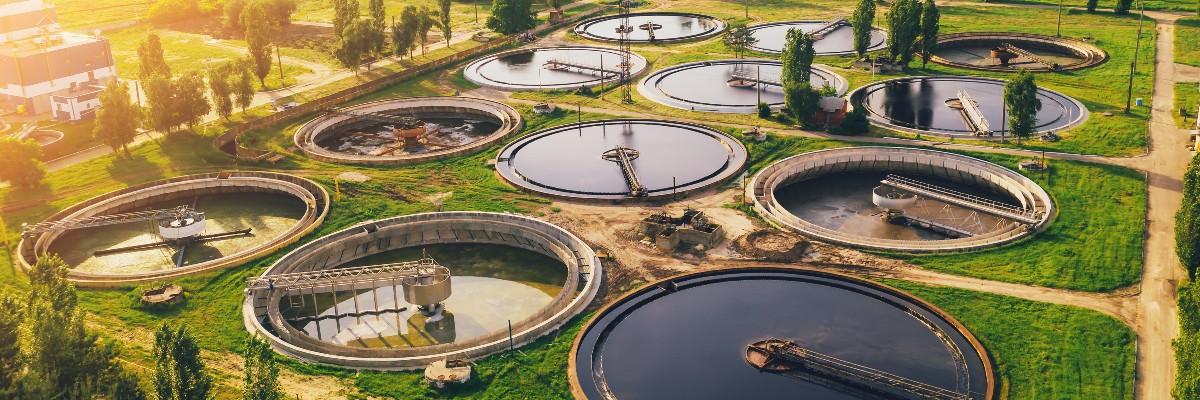Blog
Using Bioaugmentation for FOG Removal in Wastewater Treatment Plants [GUIDE]

Bioaugmentation is a well-documented method of clearing fats, oils and grease (FOG) from municipal conveyance systems. But it can also help clear FOG blockages within wastewater treatment plants. In this short guide, we review why FOG is a problem and how bioaugmentation clears FOG within wastewater treatment plants.
What Is FOG?
Cooking with ingredients like meat and vegetable oil can create fats, oils and grease (FOG). FOG in itself isn’t bad when disposed of properly. It’s when people put it down the drain that the problems begin.
While FOG can be hot enough that it won’t congeal or solidify within your kitchen pipes, it will eventually cool down and harden in the collection system before heading to the wastewater treatment plant. When FOG accumulates, it can cause clogging and overflowing.
FOG in Wastewater Treatment Plants
The food processing industry is one of the main producers of FOG in wastewater. When food and poultry processing plants don’t correctly dispose of FOG, it forms thick layers inside municipal conveyance systems. These blockages constrict the flow of the wastewater, leading to sewage spills, backups and overflows.
That FOG can make its way to wastewater treatment plants, leading to blockages in pipes and conveyance systems within the plants. This results in overflowing tanks and backups as well as operational difficulties that increase operating costs.
To combat FOG, wastewater treatment plants are turning to bioaugmentation.
How Bioaugmentation Reduces FOG Blockages
Bioaugmentation is the process of adding beneficial microbes to enhance a biological process and achieve specific outcomes. These could include:
- Lower costs
- Improved performance
- Increased safety
- Reduced odors
Wastewater treatment plants use bioaugmentation to introduce bacteria-generated enzymes to degrade FOG. This wastewater treatment process is preferable because it consumes the FOG entirely instead of moving it down the line, where it could solidify again.
But how does it all work?
Bioaugmentation in a Wastewater Treatment Plant: 3 Steps
There are three main steps for the bioaugmentation of FOG in wastewater treatment plants:
- Evaluate the system
- Take and review samples
- Provide a diagnosis and recommend solutions
1. Evaluate the System
When you notice FOG blockages in your wastewater treatment plant, it’s time to contact a bioaugmentation expert. They will come to your plant to evaluate the system and better understand the situation at hand. It also allows them to collect samples for laboratory testing.
2. Take and Review Samples
While at the plant, the bioaugmentation expert may take samples of your wastewater and the blockage itself for laboratory review. Scientists will evaluate the samples under microscopes to look at various organisms in the biomass and see which strains are present.
These insights allow the scientists to offer a solution that will help establish a more stable bacterial community.
3. Provide a Diagnosis and Recommend Solutions
After laboratory testing, the bioaugmentation expert will give you a diagnosis of your plant’s situation and recommend solutions. For reducing FOG blockages in wastewater treatment plants, the expert will likely offer a product that can be added directly to your wastewater, such as:
- Microcat-BioPOPS
- Microcat-DNTRF
Microcat-BioPOPS
The MICROCAT–BioPOPS are rugged, semi-submersible solid forms that slowly dissolve and release safe, naturally-occurring microbes that can improve FOG degradation. You simply drop or suspend the BioPOPS into the drains, grease traps, sewer lines or other water-containing systems using a line or rope. That way, the microbes inside the BioPOPS can break down the FOG in the wastewater.
For example, a pumping station in Germany suffered from excessive FOG buildup. To remove the FOG, the operating staff decided to install a BioPOPS in the pumping station. This way, they could clear the FOG and reduce the labor required to maintain the station. After two months, the staff inspected the station and found that the FOG deposits on the walls had disappeared entirely.
Microcat-DNTRF
Microcat-DNTRF is a synergistic blend of preselected, adapted microorganisms that liquefies and degrades FOG to help maintain plumbing systems and clear blockages from collection systems without causing downstream problems. Many municipal wastewater treatment plants have used Microcat-DNTRF to great effect.
One plant controlled FOG and eliminated odors in its lift station. When previous attempts with other products failed, the plant decided to use Microcat-DNTRF. As a result, the plant could maintain grease on the water surface at a manageable level and greatly reduce odor.
Another plant unclogged its sludge transfer pipes using Microcat-DNTRF. The plant saw a dramatic reduction in FOG accumulation at the bottom of the sludge thickener. Plus, there was no longer any FOG buildup in the pipes going from the sludge thickener to the digester. That also helped to lower the frequency of maintenance on the thickened sludge pumps.
Conclusion
If your wastewater treatment plant has a FOG problem, it’s time to utilize the bioaugmentation process. That way, your plant’s conveyance systems can be clear of blockages, which helps to improve operations and reduce maintenance costs.
Monera Technologies offers high-end consulting, complete lab services and cost-effective bioaugmentation solutions for wastewater treatment facilities. Contact us to learn how we can bring a holistic approach to your facility’s FOG issues.